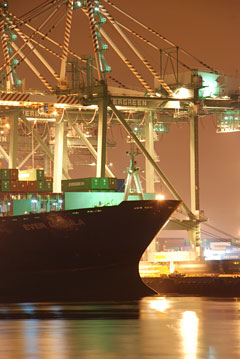Contact EPA Southern California
Pacific Southwest, Region 9
Serving: Arizona, California, Hawaii, Nevada, Pacific Islands, Tribal Nations
Air Quality
| Southern California Quick Finder | ||||
|---|---|---|---|---|
| Asbestos Brownfields Children's Health | Disaster Preparedness Grants Indoor Air | Leaking Fuel Tanks Mold | Ports RCRA ID Numbers Vehicle Imports | TMDLs Air Water Infrastructure Wildfires |

EPA's Region 9 Air Programs are concerned with pollution prevention and energy efficiency, indoor and outdoor air quality, industrial air pollution, pollution from vehicles and engines, radon, acid rain, stratospheric ozone depletion, climate change, and radiation protection.
In southern California, we are working with state and local partners to improve compliance with national ambient air quality standards.With a population of over 18 million, the Los Angeles area is a large basin with the Pacific Ocean to the west, and several mountain ranges with 11,000-foot peaks to the east and south. Frequent sunny days and low rainfall contribute to ozone formation, as well as high levels of fine particles and dust. As a result, helping the area to meet the national air quality standards and improve the health of local residents continues to be a priority for EPA.
The areas is home to many diverse industries. In spite of emission controls that are among the most stringent in the country, power generation and petroleum refining continue to be among the basin's largest stationary sources of air pollution.
The significant expansion of trade with Asia has increased the importance of the shipping industry as a major economic engine, resulting in higher emissions. One of EPA's highest priorities is to support the reduction of diesel emissions from ships, trucks, locomotives, and other diesel engines. We also are working with state and local partners to decrease emissions from port operations and to improve the efficient transportation of goods through the region.

Greening Ports
The Ports of Los Angeles and Long Beach combined are the two largest and busiest ports in the United States. EPA is a partner in the San Pedro Bay Ports Clean Air Action Plan, ![]() a sweeping plan aimed at significantly reducing the health risks posed by air pollution from port-related ships, trains, trucks, terminal equipment and harbor craft. Other key partners include the Port of Los Angeles,
a sweeping plan aimed at significantly reducing the health risks posed by air pollution from port-related ships, trains, trucks, terminal equipment and harbor craft. Other key partners include the Port of Los Angeles, ![]() the Port of Long Beach,
the Port of Long Beach, ![]() the South Coast Air Quality Management District (AQMD),
the South Coast Air Quality Management District (AQMD), ![]() and California Air Resources Board (CARB).
and California Air Resources Board (CARB).![]()
Other resources:
West Coast Collaborative 
Emissions from diesel engines are linked with serious health problems. In 2008, EPA’s National Clean Diesel Campaign provided almost $50 million nationally to promote the reduction of diesel emissions through innovative technology and programs. As one of the seven diesel collaboratives, the West Coast Collaborative (WCC) ![]() , a public-private partnership working to reduce diesel emissions along the West Coast, has awarded grants for several clean diesel projects
, a public-private partnership working to reduce diesel emissions along the West Coast, has awarded grants for several clean diesel projects ![]() in EPA Region 9 and 10 States (Arizona, California, Hawaii, Nevada, Pacific Islands, Washington, Oregon, Idaho, and Alaska) and offers ongoing grant funding opportunities
in EPA Region 9 and 10 States (Arizona, California, Hawaii, Nevada, Pacific Islands, Washington, Oregon, Idaho, and Alaska) and offers ongoing grant funding opportunities ![]() for projects which reduce diesel emissions. The Marine Vessels and Ports Workgroup
for projects which reduce diesel emissions. The Marine Vessels and Ports Workgroup ![]() of the WCC is also working to decrease emissions from southern California ports.
of the WCC is also working to decrease emissions from southern California ports.
Goods Movement

With the two largest ports in the nation located in southern California, the amount of goods moving into and through the area is increasing every year and expected to double by 2020. Goods movement results in increased air emissions, often impacting low income or minority communities located along key transportation corridors. These emissions are a major ingredient in Los Angeles smog, still the nation’s worst despite decades of hard-won gains in air quality. The area’s airborne particulate pollution also still reaches unhealthy levels.
EPA is committed to working with ports, state and local agencies to mimimize the health and community impacts resulting from goods movement through southern California.

